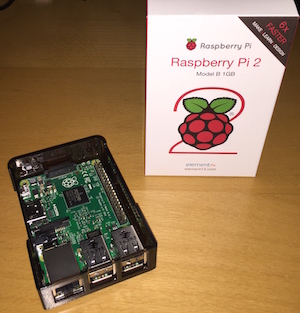06 Mar 2015
The biggest challenge for a software developer: Absorbing the latest knowledge while simultaneously keeping clients happy. Where does the time go?
Fortunately, when it comes to HTML5 and CSS3, a UK-based publisher has released a just-the-facts guide that may help. At 127 pages, the entire publication (they call it a bookazine) can be devoured in a single day. Imagine Publishing’s HTML5 & CSS3: The Complete Manual is well worth the time investment.
Note: A version of this article also appears in the Book Reviews section of ChicagoRuby.org.
Continue reading →
03 Mar 2015
Moore’s Law is about to run into a wall. Therefore, anything that software developers can learn about concurrency will be critical in coming years. Enter JRuby 9000.
Continue reading →
28 Feb 2015
The Raspberry Pi Foundation has upped their entry in the single-board computer competition. Raspberry Pi 2 Model B boasts a quad core ARM CPU and 1GB of RAM. More important: Benchmarks show that the board is 6x faster than the previous model. And the performance bump has been achieved while the price remains low: Roughly $45.
Getting the board up and running is easier, too. You can buy a pre-built Linux image on micro SD. Or you can download the New Out Of the Box (NOOBS) image yourself. Depending on the speed of your internet connection, you can be up in running in less than an hour.
Continue reading →
26 Feb 2015
“I think that it’s extraordinarily important that we in computer science keep fun in computing… What’s in your hands, I think and hope, is intelligence: the ability to see the machine as more than when you were first led up to it, that you can make it more.”
~ Alan J. Perlis,
from the Dedication page in SICP
Enrolling in the Chicago SICP study group, I expected to dive into Lisp. I expected to be challenged. What I didn’t expect: The fun, somewhat irreverent attitude of the SICP authors. And why not? Software development is one of our newest professions. Other professionals are made more effective through our work. Everybody benefits from the increase in productivity.
Continue reading →
18 Feb 2015
Veteran developer Dave Astels is leading a Structure and Interpretation of Computer Programs (SICP) study group for the next ten months. The Massachusetts Institute of Technology uses SICP as the text for one of its early computer science courses. Session one of Dave’s group starts today at 6pm. For any developer who wants to ramp up in skill, the SICP study group is an excellent opportunity to do so.
MIT makes the entire text of SICP available online for free. Or you can buy a paper version of the book at Amazon.
Thank you Brad’s Deals and Ken Walters for hosting the SICP group.
Continue reading →







